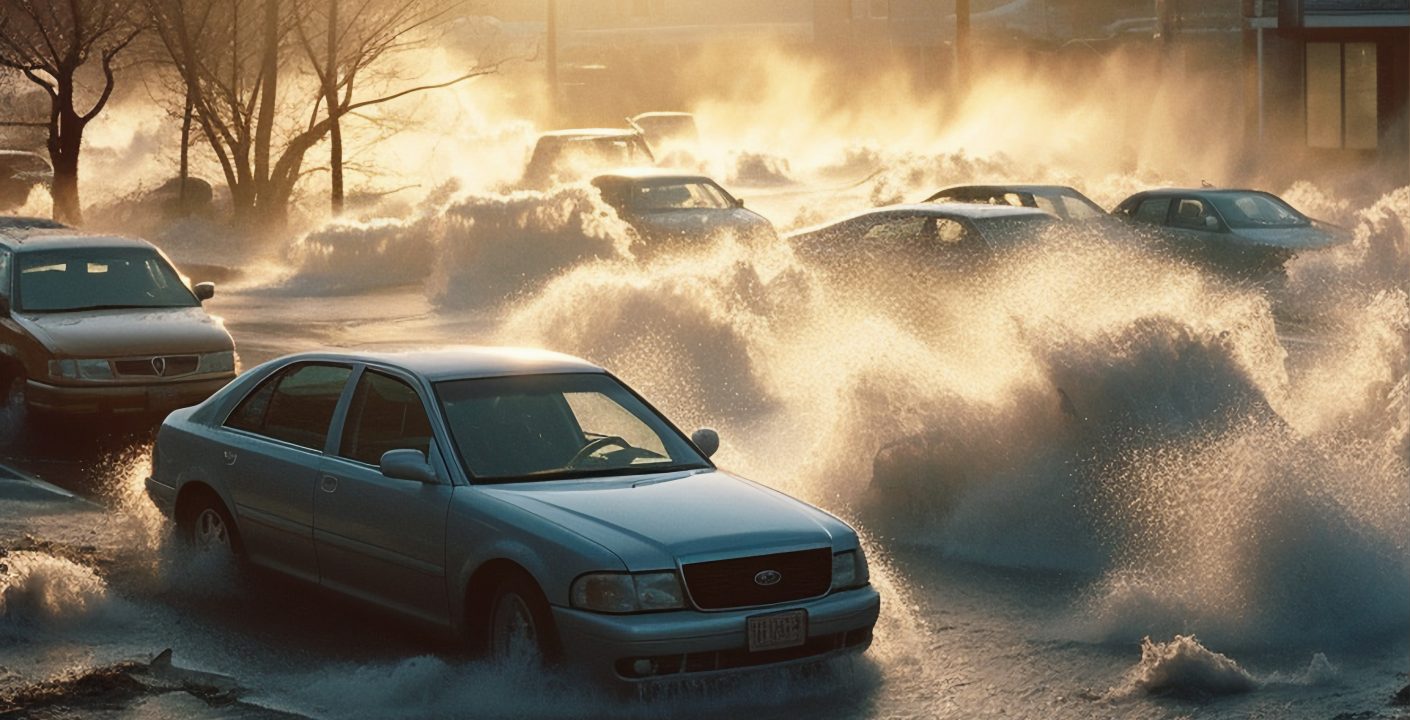Driving in heavy rain or on flooded roads can be a nerve-wracking experience, even for the most seasoned drivers. Reduced visibility, slippery surfaces, and hidden hazards can quickly turn a routine trip into a dangerous situation. That’s why it’s essential to stay prepared and take precautions to protect yourself, your passengers, and your vehicle. Here are some vital tips to help you drive in heavy rain or on flooded roads.
1. Slow Down and Keep a Safe Distance
When the rain starts to pour, your first instinct should be to ease off the gas pedal. Wet roads reduce tire traction, increasing your stopping distance. Driving slower gives you more time to react and helps avoid hydroplaning—where your tires lose contact with the road surface due to a layer of water.
Maintain at least a 4-second gap between your car and the one in front of you. This gives you enough room to brake safely if needed.
2. Turn On Your Headlights
Even during the day, heavy rain can drastically reduce visibility. Turning on your headlights not only helps you see better but also makes your vehicle more visible to other drivers. Avoid using high beams in the rain, as they can reflect off the water droplets and reduce visibility even further.
3. Avoid Sudden Movements
Sudden braking, sharp turns, or quick acceleration can cause your vehicle to lose grip on slick roads. Instead, brake and steer smoothly and gradually. If you start to skid, steer in the direction you want the front of the car to go and don’t slam on the brakes.
4. Stay in the Middle Lane (If Safe)
On multi-lane roads, water tends to pool in the outside lanes. If conditions allow and it’s safe, stick to the middle lanes where the road surface is usually higher and less water tends to collect.
5. Never Drive Through Flooded Roads
One of the most dangerous mistakes drivers make is underestimating the depth of floodwaters. Just six inches of moving water can knock over an adult, and one foot of water can sweep a vehicle off the road. If you can’t see the road beneath the water or if it’s flowing rapidly, turn around and find another route.
Floodwaters can also hide potholes, debris, or downed power lines, all of which pose serious threats to your safety and your car’s health.
6. Use Your Windshield Wipers and Defogger
Make sure your windshield wipers are in good working condition before the rainy season hits. Poor visibility is a major cause of accidents during heavy rain. Also, don’t forget to use your defogger or air conditioning to prevent the windshield from fogging up.
7. Watch for Hydroplaning
Hydroplaning occurs when your tires lose contact with the road and ride on a layer of water. If this happens:
-
Ease off the accelerator
-
Steer straight until you regain traction
-
Avoid slamming on the brakes
Keeping your tires properly inflated and ensuring they have good tread depth can also reduce the risk of hydroplaning.
8. Pull Over if Conditions Become Dangerous
If the rain becomes too intense or you feel unsafe driving, find a safe place to pull over—preferably a rest area or parking lot. Avoid stopping on the shoulder of the road unless it’s an emergency, as this increases your risk of getting hit by another vehicle.
9. Check Your Brakes After Driving Through Water
If you’ve had to drive through a large puddle or shallow floodwater, gently test your brakes afterward to ensure they’re still responsive. Wet brakes can reduce stopping power, so tap them lightly to help dry them off.
10. Be Prepared Before You Leave
Before setting off in rainy conditions:
-
Check your weather app or local traffic reports
-
Ensure your tires, lights, and wipers are in good condition
-
Keep an emergency kit in your car, including a flashlight, first-aid kit, and reflective warning triangles.
Driving in heavy rain or flooded conditions demands extra caution and a good dose of common sense. When in doubt, the safest choice is to stay off the road. But if you must drive, following these tips will help you stay safe and reduce the risk of accidents or vehicle damage.



